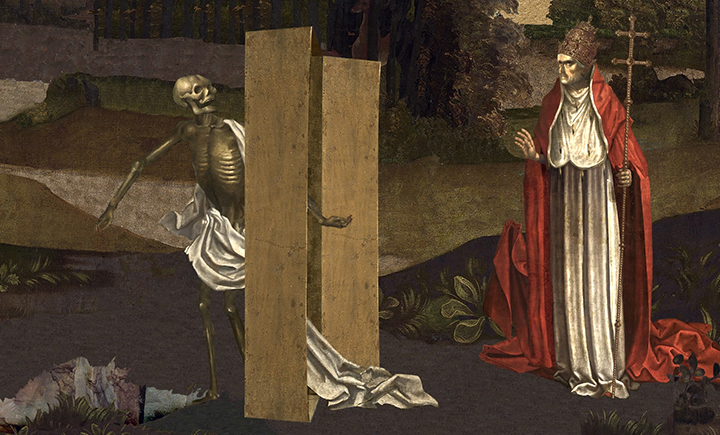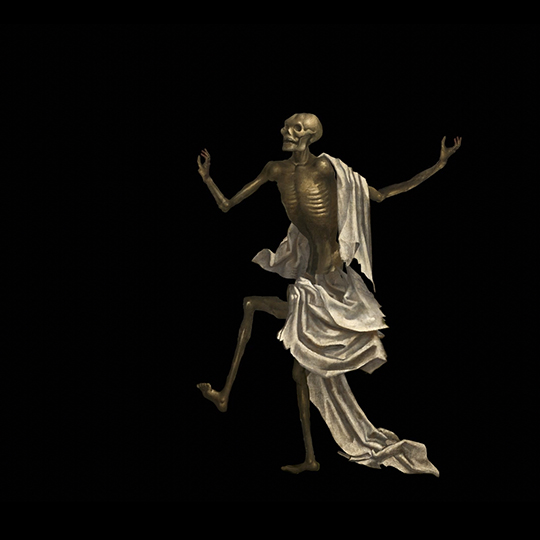Mónica Hernandez
Thomas Adès
DGG 00289 483 7998 (2020)
Thomas Adès
Boston Symphony Orchestra
with
Mark Stone, bariton and
Christianne Stotijn, mezzo-soprano
Turning a medieval Memento Mori into a topical narrative
The Totentanz animation draws a parallel between ‘earning heaven’ and the topical issue of refugees and immigrants. We live in the luxury part of the world, in well-organized societies. In the eyes of many, it is a paradise here; one might even say, heaven on earth. But not everyone is allowed into heaven, Notkes Totentanz tells us. The right has to be earned. We seem to consider it our inalienable right to live here, while others remain outside as by divine preordination. But what if we should be asked to substantiate our claims? What if we, too, should be ‘weighed’? Would we still be allowed into paradise, or would we be forced to step aside?


Friends for life
[...]The audience, cons
Heavenly Lübeck
All try to gain entry in the ‘heavenly Lübeck’ - a representation of the ideal location where they all want to go. It is a sublimated version of medieval Lübeck, as shown in Hermen Rode’s St Victor’s Altar in Tallinn. But apart from the honest and simple Bauer (Farmer) only an innocent child - who reminds us of the Syrian refugee child who drowned and was washed ashore on a Turkish beach - is carried into the town unhindered.

Totentanz
An animation project based on the painter Bernt Notke’s Totentanz cycle (1463, destroyed 1942) in the Marienkirche in Lübeck, Germany
A choral dance to the grave
In Lübeck’s Totentanz paintings Death confronts Man with his mortality in a classic memento mori representation. One by one exponents of the various classes in society are addressed and then led in a choral dance to the grave. Pope or pauper - none escape. The message is, you had better be prepared. But those who lead a moral life need not fear Death.
surviving fragment of Bernt Notke's second Totentanz, in the Niguliste Kirik, Tallinn
© Art Museum of Estonia
Every person in the Totentanz dies and arrives in the realm of the dead with their personal attributes. The pope has his tiara, the knight his sword, the doctor his Erlenmeyer flask. However, these attributes, which provided them with status and power on earth, turn out to be meaningless now. Whoever thought that Death would receive them in the hereafter in accordance with their earthly social position is in for a rude awakening. In Death’s eyes, all are equal, judged only by their good or bad deeds. Status attributes are a burden rather than a help.





Animation and video art
Music and libretto
Used recording
Conductor
Orchestra
Totentanz (animation film)
Première: September 24, 2021
1. Europäisches Totentanz Festival
in
Lübeck


